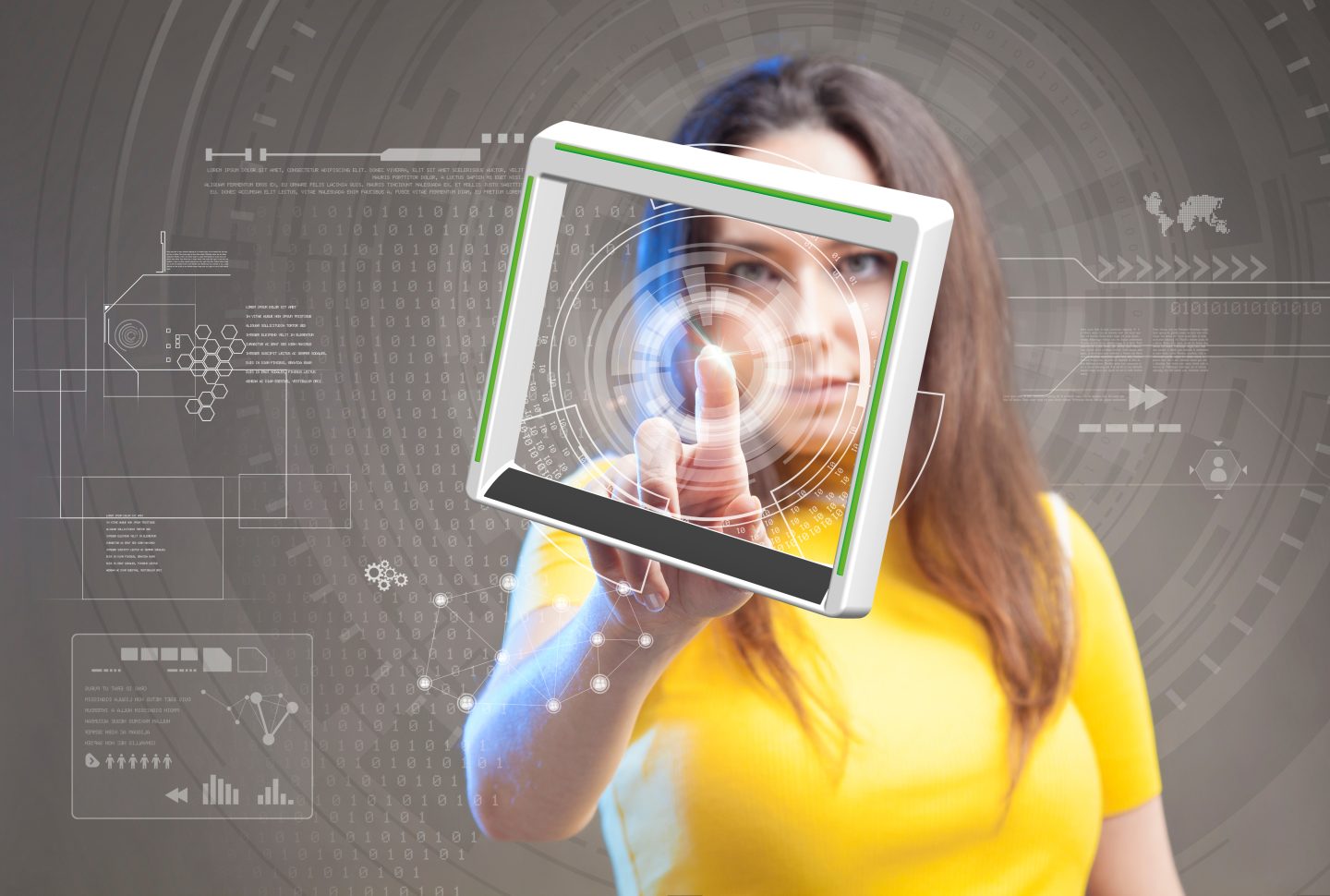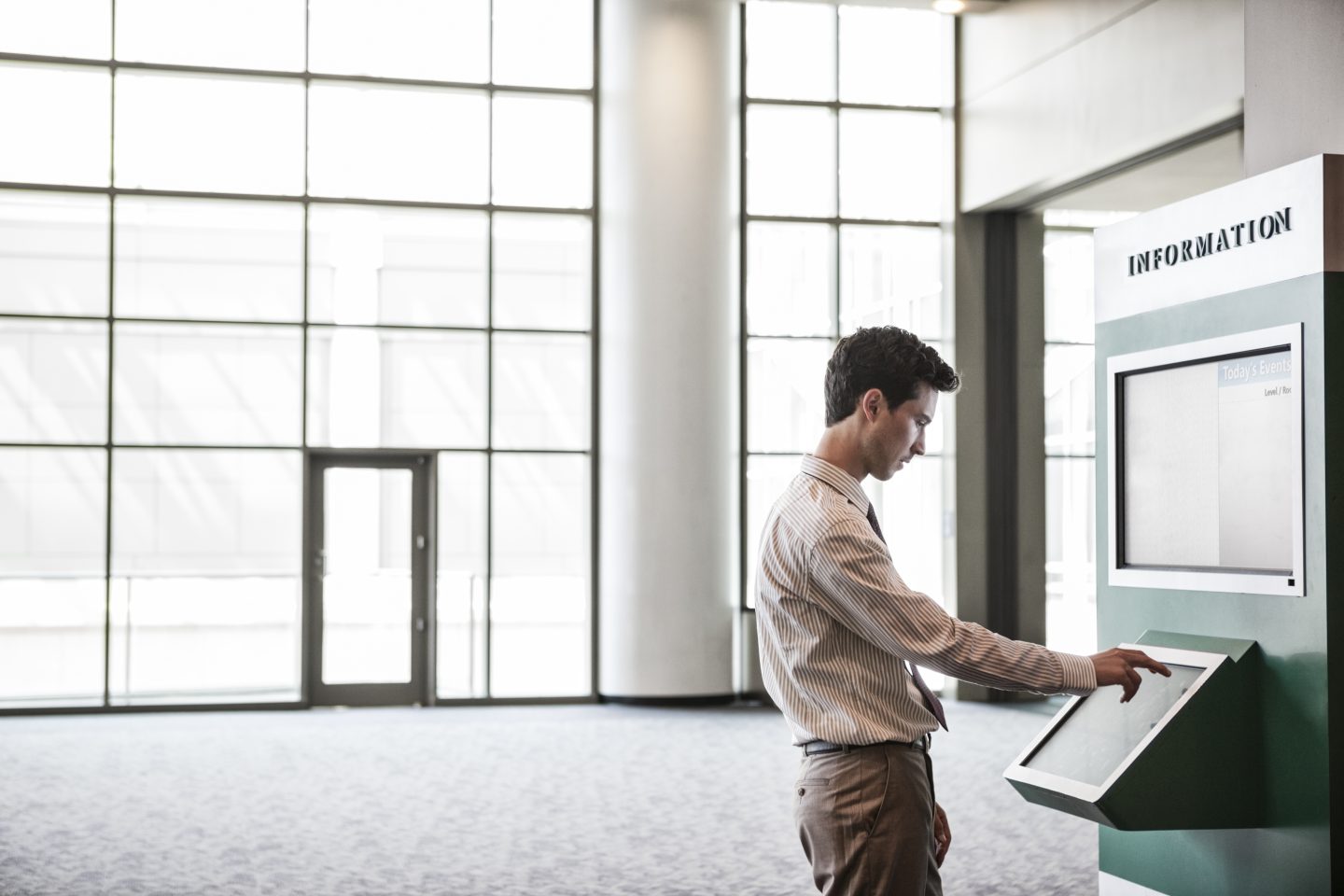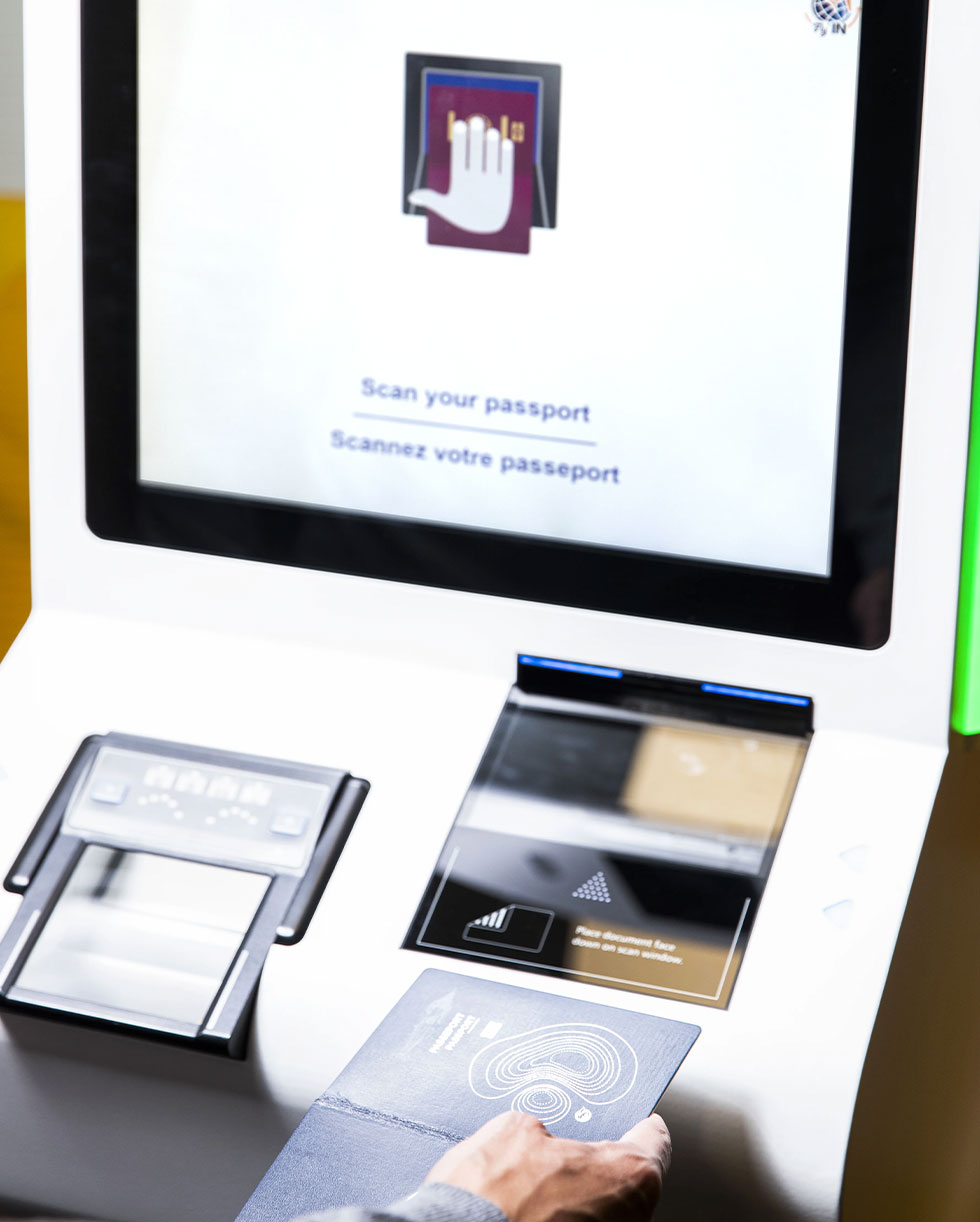Virtual Frame, a "contactless" digital experience
The Virtual Frame is an innovative, next-generation technology that allows interaction between a screen and a user without physical contact. It is the operation of a screen without having to actually touch it. The contactless gesture, a reality that is increasingly used in all sectors of activity. But how does it work? What are the applications? What are the advantages of such a system?
The Virtual Frame turns any digital screen into a contactless screen. The system is installed on the existing screen, ranging in size from 7" to 32", and integrates with the most widely used operating systems on the market (Windows, Linux and Android) without the need to develop a specific software interface. Plug & play solution. Using a simple USB connector, the Virtual Frame connects to the existing screen and transforms it into the screen of the future where touch is no longer an issue.
The Virtual Frame is easy to use and quick to install.
Install, plug in and navigate.


How does the Virtual Frame's "touchless" work?
The Virtual Frame features "predictive touch" technology that uses reflective infrared sensors to predict a user's virtual touch point on the screen without the need to press any keys. These sensors detect the finger as it approaches the screen, the "targeted" area then emits a light to indicate that the interaction is being considered. It is an innovative experience of gesture recognition at the service of the user.
For the user, it is a leap into the future with the codes of the present. For the user, it is a digital device that he does not need to touch the screen to interact with. They simply have to act as if they were going to touch the screen and stay a few centimetres away to access all the functions available.
Contactless digital display, what are the applications?
The Virtual Frame is used in a wide range of applications, particularly those involving the public, where interactive touch screens are installed. The Virtual Frame is also a response to the increasing health risks caused by the propagation of bacteria and viruses on all surfaces touched by the public.
Retail
The retail and sales sectors are always on the lookout for innovation to boost the customer experience. They are keen to offer new experiences to their users, especially for self-service purchases. Giving autonomy, responding to an immediate need, reducing queues at the checkout are all examples of how the Virtual Frame has become the "contactless" solution for everyday use.
Health
The health sector has also begun its digital transformation with the installation of more and more touch-screen kiosks to facilitate patient admission to hospitals.
Hospitality & Restaurant
It is also legitimate to find the Virtual Frame in the restaurant and hotel sector where self-service kiosks are becoming the norm, such as in fast food restaurants. As well as some hotel chains that allow you to check in and collect your room card without going through a counter outside of opening hours.
Travel & Mobility
In all modes of transport, millions of users are increasingly required to use a self-service kiosk to check in, buy a ticket or top up a pass. Airports, train stations, subways, are all places where the Virtual Frame makes it possible to avoid touching the screens and thus guarantees the health security that is essential today.
Bank
Banks and their 49,000 ATMs (source. Banque de France. Report on public access to cash, published on 16 July 2021) whose screens are regularly damaged and whose keys are worn, making local banking operations inoperable. Virtual Frame is the solution to limit the technical maintenance of the machines and reduce the related costs.
Industry
In the industrial sector, where many machines are increasingly digital, they have control screens, programming, automata and are touched by employees that the employer now wants to protect to limit costly operating losses. The Virtual Frame even allows operators to interact while wearing their gloves and specific equipment.
Enterprise
In companies, where 70% of the 600,000 vending machines in France are installed (source. Fédération nationale de vente et services automatiques (Navsa). Coffee machines and confectionery dispensers, for example, increasingly offer "contactless" payment and interactive screens to limit the risk of spreading viruses.
Virtual Frame, tha advantages of "contactless"
A sanitary response
The Covid-19 pandemic has highlighted the major importance of hand hygiene for everyone. Avoiding the transmission of germs, bacteria and viruses has become a public health issue. The Virtual Frame responds to the growing demand for "contactless".
A generational response
Today's users are used to screens. Digital interfaces are part of their daily lives. With the Virtual Frame, they expect easy interaction, an immediate and fluid response to a request on a self-service terminal without having to touch the screen.
A technological response
The implementation of the Virtual Frame reduces data entry errors and is not impacted by failures of the touch screen functionality. Reliability of data entry and durability of machines is improved.
A response for increased sustainability
The Virtual Frame reduces the risk of scratches and damage to the screen. It prevents premature damage and keeps the equipment in good condition for longer.
An economical response
No more premature replacement of damaged devices through direct interaction. No more daily cleaning operations, or even several times a day on fast-food touch screens, for example. And finally, no more buying cleaning products and antibacterial products, which have increased over the last three years.




